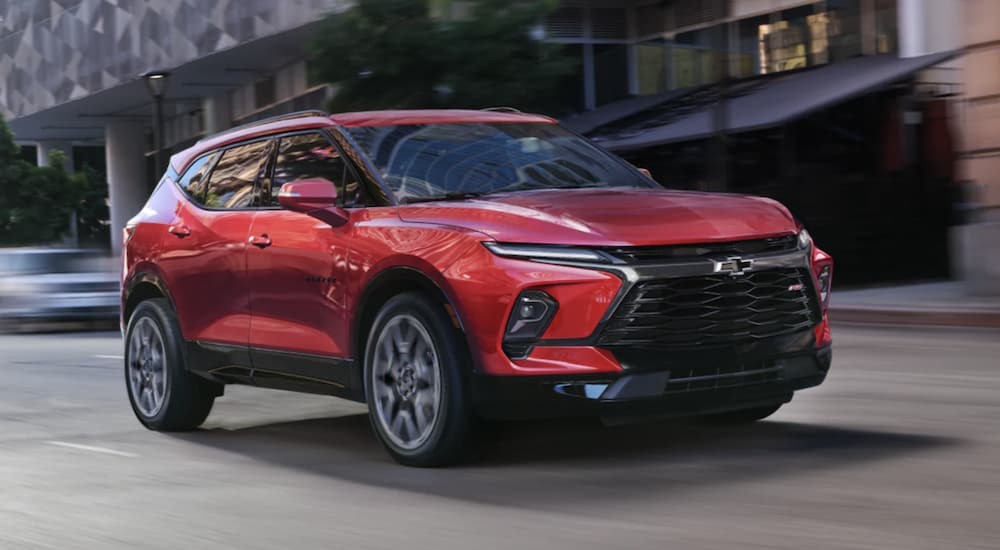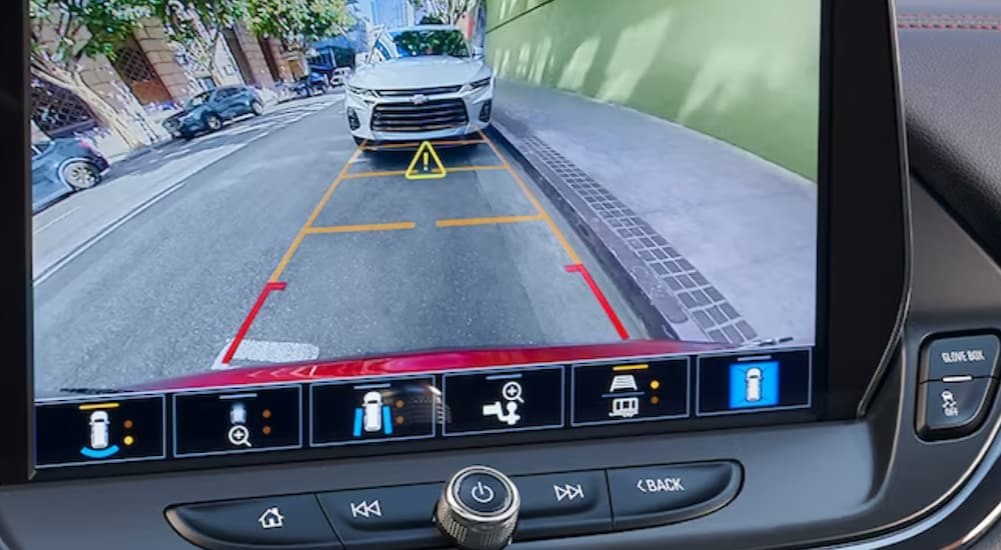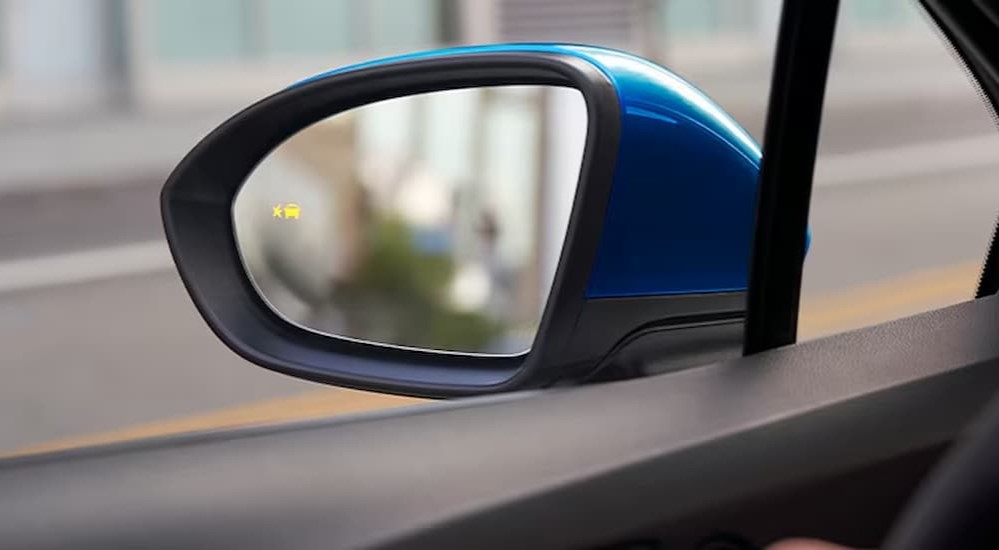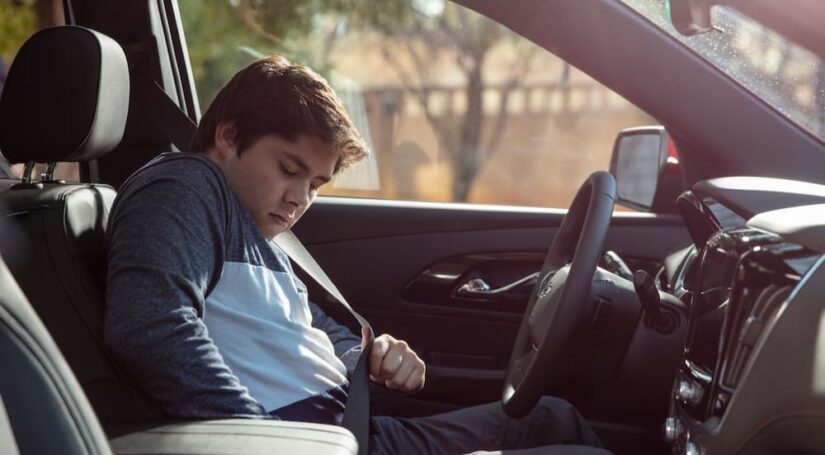Powerful engines are cool, and their specs are fun to look at— even better is feeling that power under your control when driving. Vehicles with bold capabilities, like massive towing or off-roading, are also a lot of fun to explore and talk about. The tech features and comfort options inside vehicles these days are better than ever, ensuring you’re comfortable and relaxed every moment you’re behind that wheel. All of that’s great, but none of it matters if your car can’t help keep you safe on the road.
The safety systems and technology available today are far beyond what was out there a few decades ago— far surpassing what was offered when I was growing up, at least. Before you head to a Chevy dealer in search of your next vehicle, it’s important to have a good sense of what you’ll encounter and what you should look for. Today, I’m going to take you through the basics of Chevy’s driver assistance tech offered on many of their models, as well as some of the exciting available options that you won’t get standard.
Chevy Safety Assist
Many Chevy vehicles these days come with Chevy Safety Assist, a suite of driver assistance technology that provides you with six of the most essential pieces of safety tech all in one package. You can find this standard on the base trims of some higher-end Chevy models or on higher trim levels for lower-end models (of which most still offer Safety Assist as an available add-on for their base trims if you’re not willing to jump to a more expensive trim for it). Either way, it’s the bare minimum I would look for on any new Chevy model I was interested in. This package includes:
Forward Collision Alert and Automatic Emergency Braking
I’ve grouped these two together because they’re pretty much inseparable, and one without the other is almost pointless. Forward Collision Alert uses front camera technology to detect a potential front-end collision with a vehicle ahead of you and warn you about it. Automatic Emergency Braking then provides you with enhanced braking support, applying hard braking for you to try to avoid a collision or adding to your braking to stop your vehicle faster and prevent or reduce the severity of a crash.

Front Pedestrian Braking
Like Automatic Emergency Braking, Front Pedestrian Braking uses the same camera system to detect when a pedestrian steps out in front of your vehicle and assist you with hard braking to avoid striking them. This system functions best in the daytime, with optimal visibility, and at speeds less than 50 mph, which should account for most times you’re likely to encounter an unexpected pedestrian.
Lane Keep Assist with Lane Departure Warning
These two items are also bundled together because, again, one without the other would be pointless. Lane Keep Assist uses a brief, gentle nudge of the steering wheel to warn you that you might be drifting from your lane so that you can maintain safe centering while driving. A Lane Departure Warning will alert you if you continue to veer out of your lane’s boundaries after the initial warning. These systems will not activate if you’ve switched on your turn signal or if it detects you’re intentionally veering to the side.
Following Distance Indicator
Using the same cameras as the Forward Collision Alert, the Following Distance Indicator tracks how close you are to the vehicle ahead of you and provides you with a following gap time. This helps you determine if you’re too close to the car in front of you and provides a realistic sense of how long it would take to stop your car if the person ahead of you suddenly slammed on their brakes.
IntelliBeam Auto High-Beam Assist
IntelliBeam Auto High-Beams detects light conditions and traffic to automatically turn your high beams on and off for you. They’ll switch on in low-light conditions to improve your visibility but turn off automatically when oncoming traffic is detected. This avoids blinding other drivers on the road and helps to keep everyone safe.
Adaptive Cruise Control
One of my favorite pieces of safety tech, Adaptive Cruise Control, goes beyond standard cruise control and allows you to set a safe distance between you and other vehicles. The system will adjust your speed up and down to maintain this distance while you focus on steering, providing easy driving that’s perfect for a daily commute or long road trip.

Rear Camera Mirror
While every new Chevy vehicle has a rear camera that you can view while backing up, a rear camera mirror replaces the standard rearview mirror inside your vehicle with a display that shows you the image from a rear-mounted camera on the back of your vehicle. This gives you a superior view behind yourself while driving or backing up since you don’t have to look through your vehicle and around obstacles in your rear cargo area.
HD Surround Vision
Another one of my favorite bits of technology, the HD Surround Vision system, uses multiple cameras and radar to create a virtual bird’s eye view of the area around your vehicle. This is displayed on the Infotainment system so you get an overhead look at your surroundings, making it easier to safely navigate and maneuver in tight spots. It’s one of those things that almost seems like magic and perfectly illustrates how far safety tech has come in the last few decades.
Lane Change Alert with Side Blind Zone Alert
A Lane Change Alert uses a rear camera to detect when a vehicle might be hiding in your blind and will warn you with a Side Blind Zone Alert on your side mirror. This specifically activates when you signal that you’re going to change lanes. However, the Side Blind Zone Alert can indicate any time a vehicle is approaching and hiding in your blind spot.

Rear Cross Traffic Alert
Few things are worse than dealing with limited visibility while backing up. The Rear Cross Traffic Alert system can detect when a vehicle or person is approaching and about to cross behind your vehicle while you’re in reverse. This is a fantastic piece of tech to have if you have a driveway you need to back out of frequently, as well as for dealing with blind alleyways and busy parking lots.
Rear Park Assist
As you’re backing up, Rear Park Assist can provide you with a warning when an object is detected near the back of your vehicle. This helps you avoid collisions at low speeds, particularly with low or small items that you might not be able to see clearly from your rearview mirror. It’s one of those things that isn’t essential but can quickly prove its value, especially if you have kids who like to leave bicycles or other toys behind your car.
Even More Tech to Keep You Safe
Although this covers most of the advanced driver-assistance technology that Chevy offers, it’s far from inclusive, and there are even more systems available. Many new Chevy vehicles come with a Teen Driver system that’s perfect if you have a young driver you want to teach safe habits to: it lets you activate certain safety systems automatically when your teen is behind the wheel, prevents shifting out of park if the driver’s seat belt is not engaged, and provides you with an in-vehicle report card to see how your teen is doing. Some models also have a Safety Alert Seat available, which provides feedback for safety alerts in the form of vibrations that pulse through the driver’s seat, helping you respond to safety warnings even faster. When you put these different systems together, you get one of the safest vehicles on the road and a clear picture of how Chevy is leading the way for safety in the industry.



